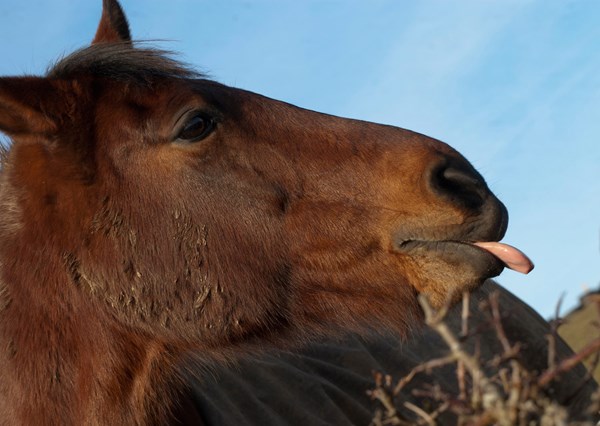 Credit: Thinkstock
Credit: ThinkstockHorses tend to be kept in confined spaces following an illness, injury or surgery that necessitates quiet time. How each horse handles such restricted activity depends largely on the individual’s personality. One item of concern for you, the horse owner, is how to manage and modify the feeding regimen. With less exercise comes a need for fewer calories, yet the horse needs sufficient nutrients to promote healing.
Rarely will a horse be content with the amount of food you are offering: Either he’ll want more, or he won’t have much of an appetite and will refuse to eat. Feed him too much (or too much of the wrong thing) and he becomes difficult to handle and too active to facilitate healing. You’ll want to figure out ways to keep him from becoming dangerous or so restless that he tries to tear the stall apart. If he eats too little, this adversely affects his immune system and overall health, with negative impacts on healing progress.
Stimulating a Reduced Appetite
Appetite loss usually is a sequel to a surgical procedure or due to intestinal upset, illness or intense pain. Sometimes all it takes is a good jump-start to get him interested again in eating. Here are some tricks you can try that might stimulate your horse to eat:
- A sloppy bran mash mixed with supplement (complete feed pellet or a small amount of grain) not only is tasty but it also gets a little water into your horse.
- A beet pulp mash (pellets soaked in water for 6-8 hours) provides fiber, calories and fluids.
- Adding carrots, apples, softened horse biscuits, molasses, sugar water or Karo syrup might get him interested in a bucket of food.
- “Harvesting” bits of green grass or taking him to a spot where he can graze (while restrained on the lead line) is an excellent stimulant to appetite.
- If he usually only gets grass hay, then adding in a small proportion of alfalfa hay is much like giving us chocolate cake with our dinner.
And, of course, if pain is the cause of your horse backing off food, then discuss with your vet the practical use of anti-inflammatory medication.
Reducing Calories
For a horse that is no longer able to be active due to confinement, it is wise to cut back the calories. Here are some tips:
- Switch him to an all-grass hay diet if he isn’t already on that. Fiber is the most important ingredient for keeping horse intestines healthy and to curtail the risk of developing gastric ulcers.
- Weigh the hay with a scale rather than guess-timating with volume so you feed an exact amount each day. The amount to feed should be calculated based on your horse’s body weight and your veterinarian’s recommendations–this amount will vary depending on starting condition of your horse and his unique metabolism.
- Cut out most, if not all, supplements while the horse is inactive unless he is a hard keeper that needs added calories to maintain body condition.
- Feed small amounts of hay frequently throughout the day rather than in just two big meals. A “slow feeder” hay net helps slow intake so the hay lasts longer.
- Provide stall toys to occupy him so boredom doesn’t cause him to resort to eating bedding, dirt or the confining structure.
In all cases of forced confinement, converse with your veterinarian about what diet is most appropriate for your horse and his individual issues. You might need to be a bit creative to keep your horse happy and ‘healthy as a horse’ while in confinement. Once a routine has been established, he should settle in and get about the business of healing.


